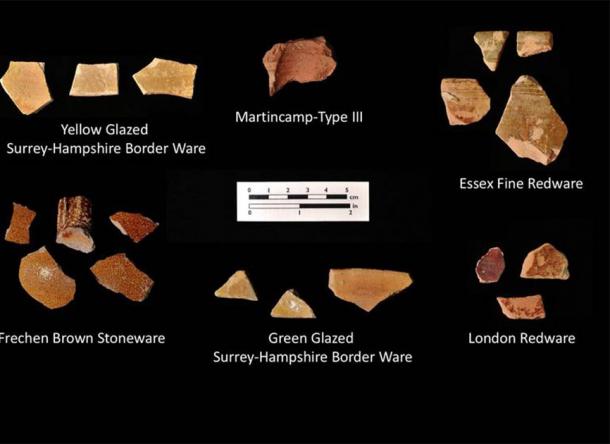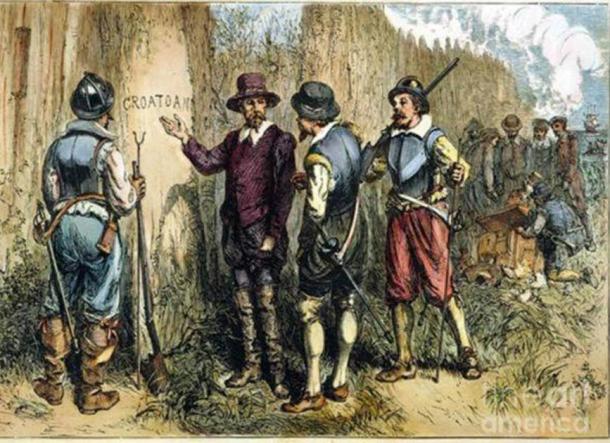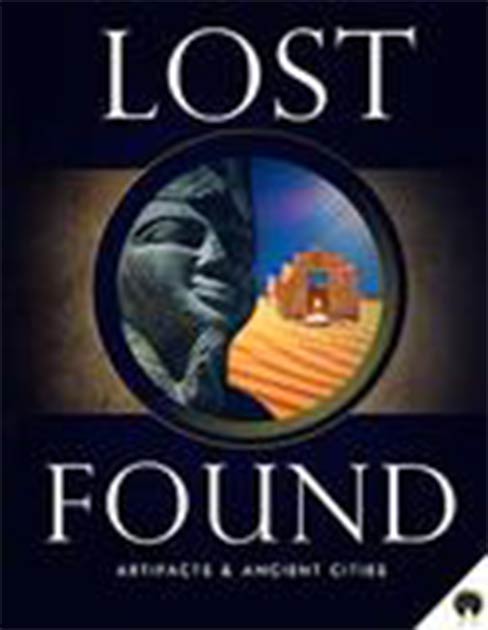American researchers have presented new archaeological evidence of what they think represents survivors from the lost Roanoke colony in Bertie County, North Carolina, living among native populations. However, established Roanoke experts have strongly questioned the new findings related to this latest Roanoke colony theory. The established view of the fate of the Roanoke settlers differs from the most recent Roanoke colony theory that suggests some survived and lived out their lives in what is now Bertie County.
In the 1580s AD, Queen Elizabeth I commanded famous explorer Sir Walter Raleigh to venture to the New World and found the first permanent English colony in North America, the Roanoke Colony. After Humphrey Gilbert claimed St. John’s, Newfoundland, in 1583, Roanoke was the second English settlement which was established in 1585 AD on Roanoke Island, in Dare County, North Carolina. And after that colony failed a second colony was founded there by John White in 1587 AD.
It was this second settlement of English that became known as the “Lost Colony” due to the unexplained disappearance of its entire population of around 100 people, representing one of America’s oldest unsolved mysteries. And while the newest Roanoke colony theory seems to show what actually happened to the lost colony, not everyone is convinced.
The Latest Roanoke Colony Theory Creates Serious Questions
Most archaeologists agree that the Roanoke colonists were likely killed by, or assimilated into, an indigenous tribe , or that the people died of disease or extreme weather, or that they simply relocated to a yet unknown location. But now, according to a press release from the First Colony Foundation “English pottery pieces that date from the 1580s including jugs and pots used for food preparation, consumption and storage, have been discovered in Bertie County.” The researchers of the latest Roanoke colony theory claim the artifacts recovered from the Bertie County “Site Y,” indicates long-term habitation by the Roanoke survivors.

Fragments of early English pottery that were found in Bertie County, Virginia by archaeologists working with the First Colony Foundation, which are the primary evidence for the latest Roanoke colony theory. ( First Colony Foundation )
According to a report in the Virginian-Pilot this new excavation area comprises 72 dig locations each measuring five square feet (1.24 square meters). Phil Evans, president of the First Colony Foundation, says these artifacts suggest that about a dozen people from at least one family from the lost colony of Roanoke “lived there, and possibly some servants.” Artifacts found at the Site-Y excavation site include a “Martincamp flask and a Spanish olive jar,” which suggests Elizabethan English people had lived here for a long time. Evans said the newly found pottery is similar to pottery found at the Fort Raleigh Historic Site on Roanoke Island, and to items found at the Jamestown colony site.
Mr Evan’s takes something of a leap of faith presenting pieces of colonial pottery and linking them with the lost Roanoke colonists. And for this reason, and many others, the archaeological group, the Croatoan Archaeological Society , told the Virginian-Pilot “it ’s unlikely that Lost Colony members lived in Bertie County.” The doubting side believes the English pottery could have “been traded with natives, who left it where it was discovered.”
Tracking the Lost Colonists of Roanoke Island
In June this year I wrote an Ancient Origins news feature in which I quoted historian James Horn’s 2010 book A Kingdom Strange: The Brief and Tragic History of the Lost Colony of Roanoke , which explains that the second wave of around 150 settlers who arrived on Roanoke Island in 1587 AD discovered the word “CROATOAN” and “CRO” carved on a tree. This was interpreted as meaning the colonists had gone with the Croatoans (a local indigenous tribe) to Hatteras Island , thereby explaining why White never found the colony when he returned.

Painting by Englishman John White of Sir Walter Raleigh’s 1590 Expedition to Roanoke Island to find the Lost Colony, where they found “Croatoan” carved on a tree. This may refer to either Croatoan Island or the Croatoan people. (John White / Public domain )
Challenging author Horn’s theory, Mr Evans postulates that White ’s group must have “dispersed into smaller ones as a single indigenous tribe could not have supported an additional 100 or so English colonists .” Mr Evans goes on to theorize that a small group perhaps went to Croatoan Island in the fall or winter of 1587 AD to wait for John White to return, while the remainder moved inland to the mouth of the Chowan River and Salmon Creek, and left the artifacts, recently discovered, in Bertie County.
The Latest Roanoke Colony Theory Is Viewed As Wrong
The Croatoan Archaeological Society openly disagrees with Mr Evans new ideas, maintaining the evidence proves the lost English colony “assimilated with the Croatoans on Hatteras Island.” Perhaps their biggest argument against Mr Evan’s new location in Bertie County, was laid out by Scott Dawson, who founded the Croatoan Archaeological Society. He told the Virginian-Pilot that Bertie was in “the heart of enemy territory,” and that it was “the last place they would go.” He also points to the fact that White asked the colonists to leave a message should they move on, and that they “literally wrote down that they relocated to Croatoan, on a tree.”
 Will we ever find Eldorado, the lost city of gold? Will we ever recover the Three Sacred Treasures of Japan, or the glittering panel walls of the missing Amber Room of Saint Petersburg? Tantalizing treasures and disappeared cities lie in wait for rediscovery. We’ve already found the long-fabled city of Troy and have unearthed beautiful artifacts in mysterious tombs. This proves that the search for the Lost and Found (and found and lost) of history is a worthy and vital quest! Find the answers in the Ancient Origins Magazine Special here .
Will we ever find Eldorado, the lost city of gold? Will we ever recover the Three Sacred Treasures of Japan, or the glittering panel walls of the missing Amber Room of Saint Petersburg? Tantalizing treasures and disappeared cities lie in wait for rediscovery. We’ve already found the long-fabled city of Troy and have unearthed beautiful artifacts in mysterious tombs. This proves that the search for the Lost and Found (and found and lost) of history is a worthy and vital quest! Find the answers in the Ancient Origins Magazine Special here .
Dawson is so convinced that his theory is correct that he recently published a book entitled “ The Lost Colony and Hatteras Island ,” in cooperation with archaeologists at the University of Bristol , highlighting the lives of the Native American cultures who inhabited these landscapes for thousands of years before the first European arrivals in the 16th century AD. This book provides compelling archaeological and historical evidence that the lost colonists of Roanoke did indeed move to Hatteras Island. And this theory doesn’t require any “leap of faith” to make perfect sense, unlike the Evan’s theory.
Top image: The village of Secoton in Roanoke Island, painted by settler and artist Governor John White, circa 1585 AD. Source: Public Domain
By Ashley Cowie
Related posts:
Views: 0
 RSS Feed
RSS Feed

















 October 19th, 2020
October 19th, 2020  Awake Goy
Awake Goy  Posted in
Posted in  Tags:
Tags: 
















